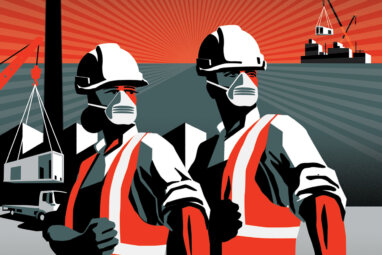To Navigate Conflict, Prioritize Dignity
Four interrelated practices can bolster dignity, leading to more constructive problem-solving and collaboration.
Topics
Frontiers

Rafael Lopez/theispot.com
Conflicts between businesses pursuing commercial objectives and communities defending their interests arise regularly and often inevitably, especially when companies don’t prioritize engagement with their neighbors. Consider the rapid expansion of the mining sector in Latin America, renewable energy projects that underestimate “not in my backyard” opposition, or the displacement of marginalized groups with unwanted facility siting. In many cases, the work has slogged on despite local protests, and drawn-out conflict has resulted.
Leaders inclined to think strategically and competitively may believe that stakeholder management in these cases is a matter of outmaneuvering the other party through gamesmanship, but that is shortsighted. When corporate interests conflict with the needs and values of communities, we need to build better interactions among people, especially those intensely at odds with one another who also need to collaborate.
This is where augmenting dignity can help. In my years of work in conflict resolution with the Consensus Building Institute (CBI), I’ve seen the benefit of putting the basic human need for dignity at the center of my efforts. By dignity, I mean our inherent sense of value, self-worth, and need to contribute and shape what matters most to us. Emphasizing dignity in conflict resolution doesn’t displace the tactics and strategies of classical interest-based negotiation, either; rather, it precedes them, prioritizing what drives human behavior.
Donna Hicks, Roger Fisher, and Daniel Shapiro have written amply of the role of dignity and emotion in conflict resolution. Working in the field, I’ve found four interrelated practices that distill what’s needed most to sustain such dignity, thereby helping people navigate effective problem-solving and healthier collaboration. These four practices are deepening acknowledgment, strengthening agency, building reciprocity, and ensuring clarity of path — acronymically forming an “AARC” that can help leaders across both commercial and public fields.
Deepening acknowledgment can set organizations on a better path to problem-solving. As Donna Hicks writes in Dignity: Its Essential Role in Resolving Conflict (Yale University Press, 2021), acknowledgment happens when you grant people “your full attention by listening, hearing, validating, and responding to their concerns, feelings, and experiences,” creating a gateway to deeper engagement. Acknowledgment in this sense is not platitudinous empathy. Rather, it’s about naming tensions and core issues with an appropriate emotional tenor.




